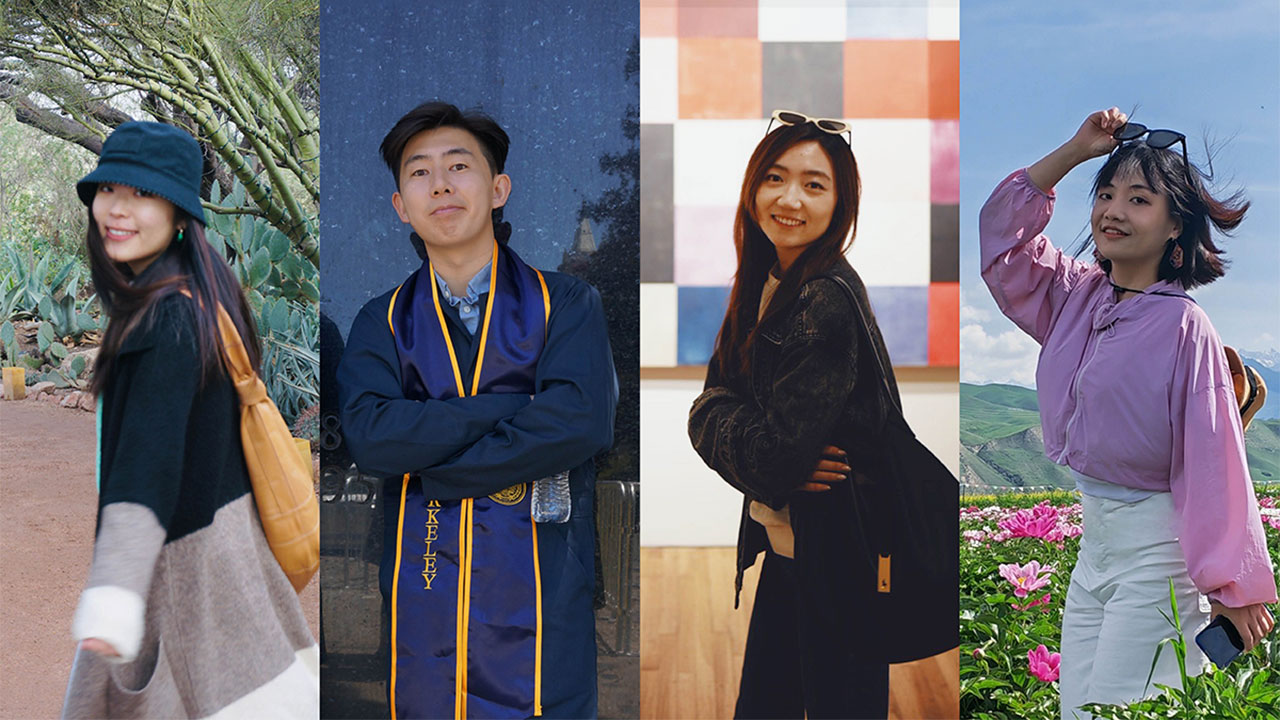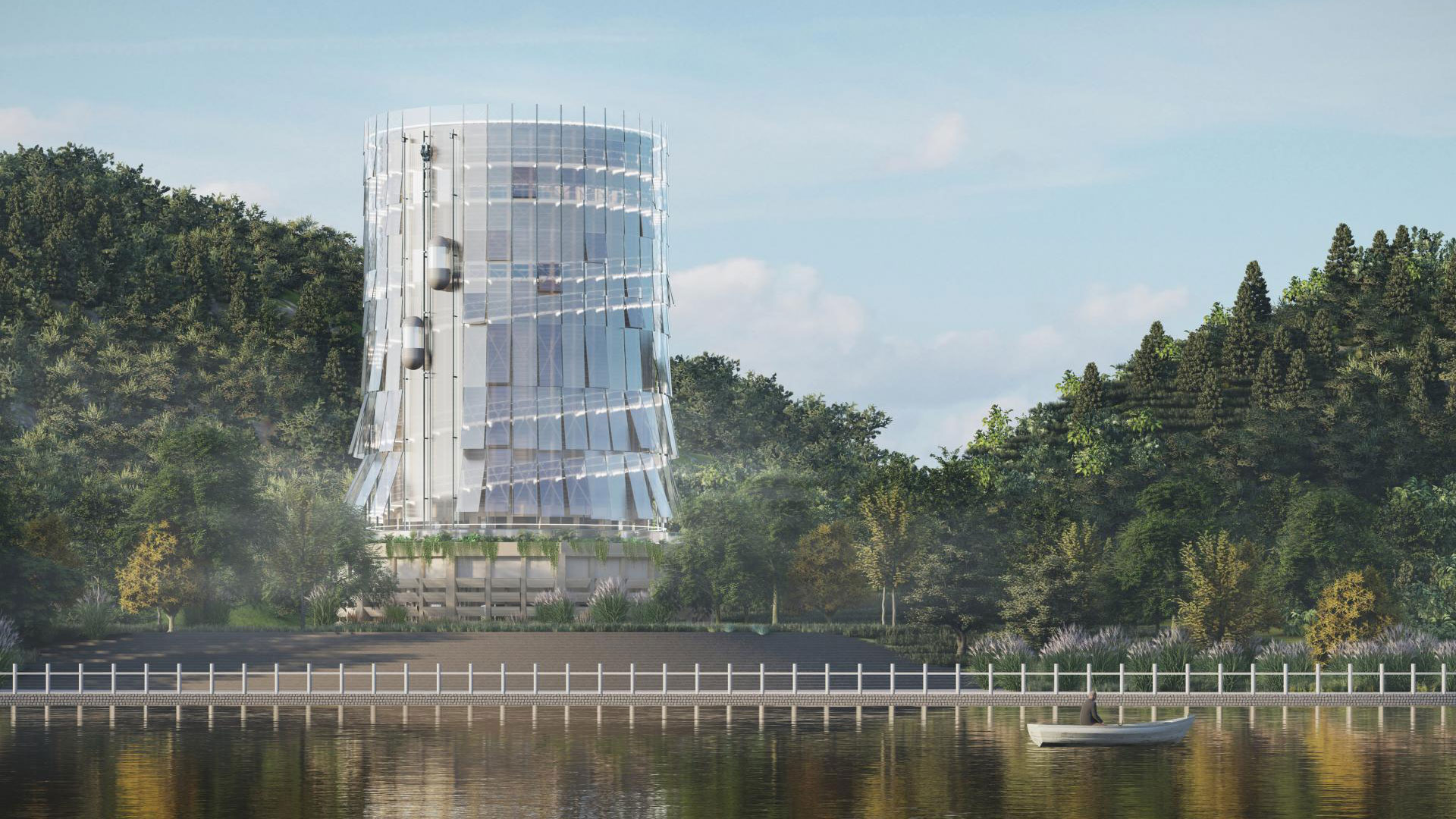1Please give us a brief bio of yourself and your design background.
We are four architectural designers united by a shared passion and common goal: to contribute high-quality design that enhances urban environments and living habitats.
Zhiyu Li is an architectural and urban designer based in the United States. She earned her Bachelor of Architecture in China and her Master of Architecture in Urban Design from Harvard University. With a cross-disciplinary background, Zhiyu has worked on diverse mixed-use projects spanning from urban to architectural scales.
Ziyang Xu is an architectural designer based in the United States. He holds a Master of Architecture degree from UC Berkeley and has experience with a variety of projects across the United States, Europe, and China.
Yutan Sun is an architectural and computational urban designer based in the United States, she holds a Master of Architecture degree from MIT.
Lanchun Zeng is an architectural and urban designer based in China. She earned her Master of Architecture in Urban Design from Harvard University.
2What made you become/why did you choose to become a designer/artist?
We were born and grew up during a time of rapid urban development in China. We witnessed the transformative impact that architecture had on people's lives. This experience made us realize how architectural design could bridge the past and present, creating meaningful connections. This realization fueled our passion for design as a way to create spatial experiences that resonate with people, evoke emotions, celebrate culture, and enhance their lives. The desire to make a positive impact through design is why we chose to dedicate our careers to becoming architectural designers.
3What does “design” mean to you?
To us, design is more than just creating physical spaces and tangible objects. It is a catalyst for sparking social and philosophical thoughts and a tool for preserving historical memories while envisioning future opportunities. Design permeates every aspect of life, from grand scales to intimate details, profoundly impacting our society and environment. We see design as a powerful instrument to protect and enhance our living spaces, shaping a better habitat for all.
4What’s your favorite kind of design and why?
We love design that resonates with people's perceptions and extends the cultural meaning behind it. Such designs create deeper connections, evoke emotions, and enrich the human experience by weaving cultural significance into their form and function.
5To you, what makes a “good” design?
We think that a good design can seamlessly blend aesthetics, functionality, and purpose. It should solve a problem or fulfill a need while being visually appealing and emotionally resonant. A good design is also sustainable and considerate of its impact on the environment and society. Ultimately, it creates a meaningful and positive experience for its users, standing the test of time.
6Describe your design style and its main characteristics.
Our design style considers both the larger urban scale and the intimate architectural scale, integrating the urban context into the local backdrop. We prioritize human experience, creating functional, emotionally engaging spaces. Our designs emphasize sustainability, innovation, and a seamless blend of traditional and modern elements to create timeless, meaningful spaces.
7Tell us about your design process.
Our design process begins with a deep dive into the environmental and cultural context of the project. We thoroughly understand the users' needs and explore the site's potential. From there, we explore various design options and evaluate them from multiple perspectives. Ensuring the functional elements are met is crucial, followed by creating aesthetic forms and spaces.
8Do you think your country and its cultural heritage has an impact on your design process?
Absolutely, China's rich cultural heritage and diverse environments greatly influence our design process. Growing up in a country with deep historical roots and rapid urban development, we are inspired by the blend of traditional and modern elements. The varied cultural practices and architectural styles across different regions provide a wealth of inspiration, allowing us to incorporate unique cultural aspects into our designs.
9Congratulations! As the winner of the 2024 MUSE Design Awards, what does it mean to you and your company and team to receive this award distinction?
Winning the 2024 MUSE Design Awards is an incredible honor for us. This recognition affirms the dedication and hard work of our team. It means a great deal to us because it validates our commitment to excellence and innovation in design. This award motivates us to strive even harder to make a positive impact through our work.
10What was the biggest challenge with this project?
The main challenge of this work is to retain the space's unique characteristics and memories to the greatest extent. We chose water vapor as the foundation of our concept, serving as a bridge between the past and present. The reinterpretation of the element of water is the essence of this project, symbolizing our hope to preserve and continue memories amidst the transformation of social styles over time.
11How has winning an Award developed your practice/career?
Winning an award enhances our visibility in the industry, attracting exciting project opportunities. The recognition motivates our team to continue pushing creative boundaries. And it opens doors for collaborations with other talented professionals and allows us to expand our network within the design community.
12What are your top three (3) favorite things about our industry?
Creativity & Innovation, Impact on Society & Environment, and Interdisciplinary Collaboration.
13Where do you see the evolution of design industry going over the next 5-10 years?
We believe sustainability and AI technology will be pivotal over the next decade. Instead of rapid city expansion and real estate development, future urban growth will likely slow down, incorporating more sustainable, environmentally friendly design considerations.
Additionally, as lifestyles evolve, especially in the post-pandemic era, design will adapt to align with new ways of living, reflecting changes in how we work, live, and interact with our environments. Furthermore, AI is revolutionizing design technology, offering new tools and methodologies that enhance creativity, efficiency, and innovation in the design process.
14If you were a student entering this industry or an aspiring MUSE Design Awards submitter, what advice would you give them?
Our advice is to stay curious and never stop learning. Embrace both the theoretical and practical aspects of design, and seek inspiration from diverse sources. When submitting for an award, apply the same principles: pay attention to detail and strive for excellence in every project.
15What resources would you recommend to someone who wants to improve their skills in the design industry?
For those seeking to improve their skills in the architectural design industry, we would recommend studying the work and theories of influential architects. Additionally, one of the most important resources is visiting those great architecture and experiencing great classic spaces firsthand.
16What is your key to success? Any parting words of wisdom?
Continue learning and innovation, embrace new challenges, and strive to push the boundaries of design. Collaboration and teamwork are also essential, as they bring diverse perspectives and ideas that enrich our projects. Design with empathy and purpose, aim to make a positive impact on the world around you.




